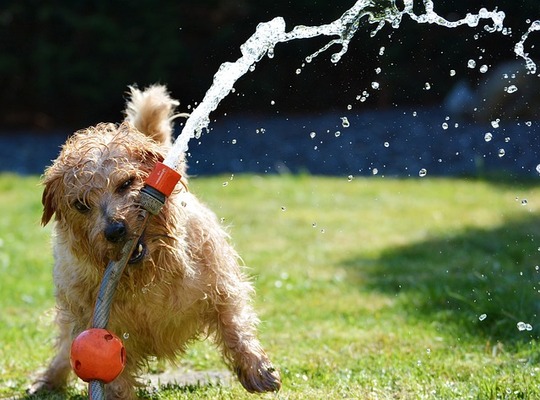A Guide to Properly Watering Your Trees

A Guide to Properly Watering Your Trees
Now that the hot days of summer are here and rain is lacking, you are going to need to supplement the water that your trees receive.
What’s the best method for watering your trees ? How much should you water them? We’ll be discussing that and more in our ultimate guide to properly watering your trees.
When Should I Water Them?

During the hottest part of the day, around mid afternoon, a lot of the water that’s used to water your trees is being completely lost to evaporation. If you water your trees between 12-4, they won’t be getting all of the moisture they need.
For that reason, we recommend giving your trees water either first thing in the morning, or in the evening. This gives the roots of your trees a chance to absorb the water they need.
Each tree is going to be different as far as how often they will need additional watering. Depending on how large or small the tree is, the weather, and the quality of your soil, the amount of water needed may differ.
If you are unsure of what your trees need for additional moisture everyday, checking the soil is the easiest and safest way to find out. You never want the soil around your trees to be extremely soggy or flooded, just moist. If the soil is bone dry, you need to water the tree. To check this, make sure to dig down with a small garden trowel about 2-3 inches – this will make sure that you don’t overwater the roots.
While you don’t want to overwater the trees, you do want to be as consistent as possible. If you allow the trees to fully dry out or keep them constantly soaked, they will suffer. Instead, keep the soil fairly moist at all times for the healthiest results.
We advise that you make a habit of checking the trees regularly. If you have an extensive drought or heat wave in your area, make sure to check more frequently than you would when you’re receiving regular rain.
How Much Should I Water Them?
So now that you know how frequently your trees should be watered, let’s discuss how much water they should receive.
The average rule for established trees (not newly planted trees) is to give them ten gallons of water per inch of the tree’s diameter. All you need to do to is take a tape measure or ruler at around knee height to measure the diameter. The number does not have to be exact, but try to get close so you don’t overwater the tree.
What About Newly Planted Trees?

So all of the tips and tricks we have shared so far are perfect for established, older trees, but what about your new trees ? These will need some additional care to keep them happy and healthy.
Trees that are extremely young are still trying to establish their root systems, which means that they need additional water to grow and thrive.
You will want to water new trees once a day for about a month after they’ve initially been planted, and after that period they will need regular water once a week while they’re growing. These trees will still need to have their soil checked regularly, as over watering them will damage them as well.
Initially the roots of these new trees will all be in the root ball. Once the roots start to extend out of that ball, you can water them just like your established trees.
How Do I Stop the Soil From Drying Out too Quickly?
Like we have talked about before in our mulching guide , mulching around your trees is a great way to retain the moisture they receive.
We definitely recommend around 2-4 inches of mulch around your trees, especially if you live in an area that experiences excessive drought and heat. This will conserve extra water and also regulate the temperature of the soil.
Make it a Habit

While this is an especially important task to complete during the hot summer months, you should make this a habit all year round. During even the cold winter months, your dormant trees are still growing and need water. When watering in the winter, stick to when both the soil and the outside air are above 40 degrees Fahrenheit.
We hope this guide helps you create great habits for keeping your trees happy and healthy. If you stick to a regular schedule of watering and checking on your trees, they will surely thank you for it later on! If you have additional questions about taking care of your trees, feel free to contact us for a consultation as well.





